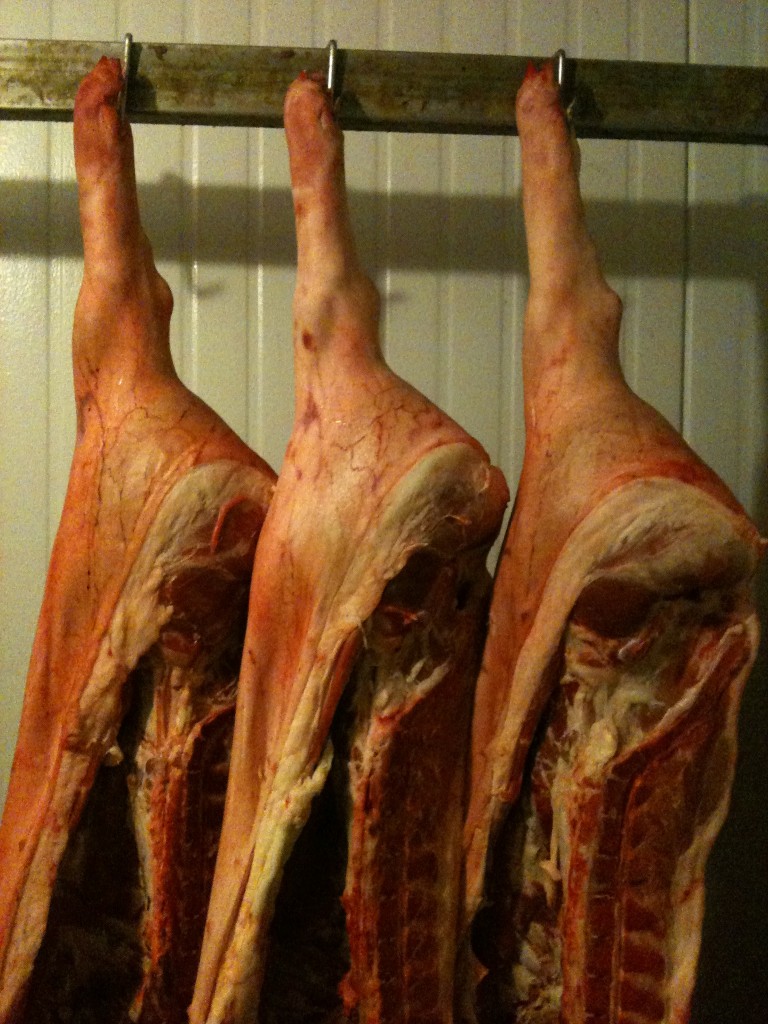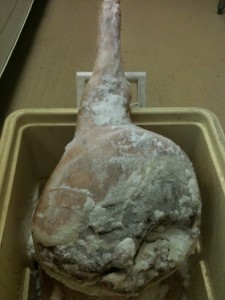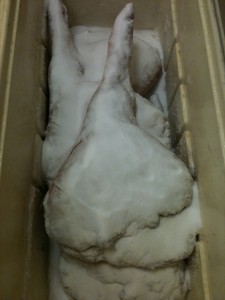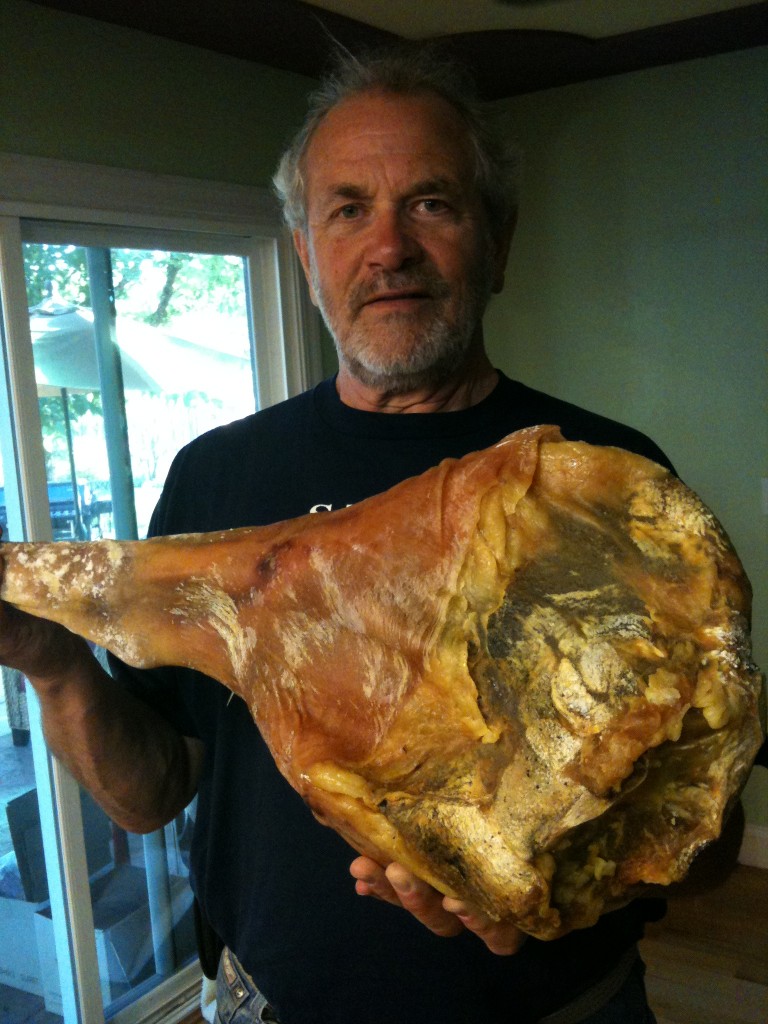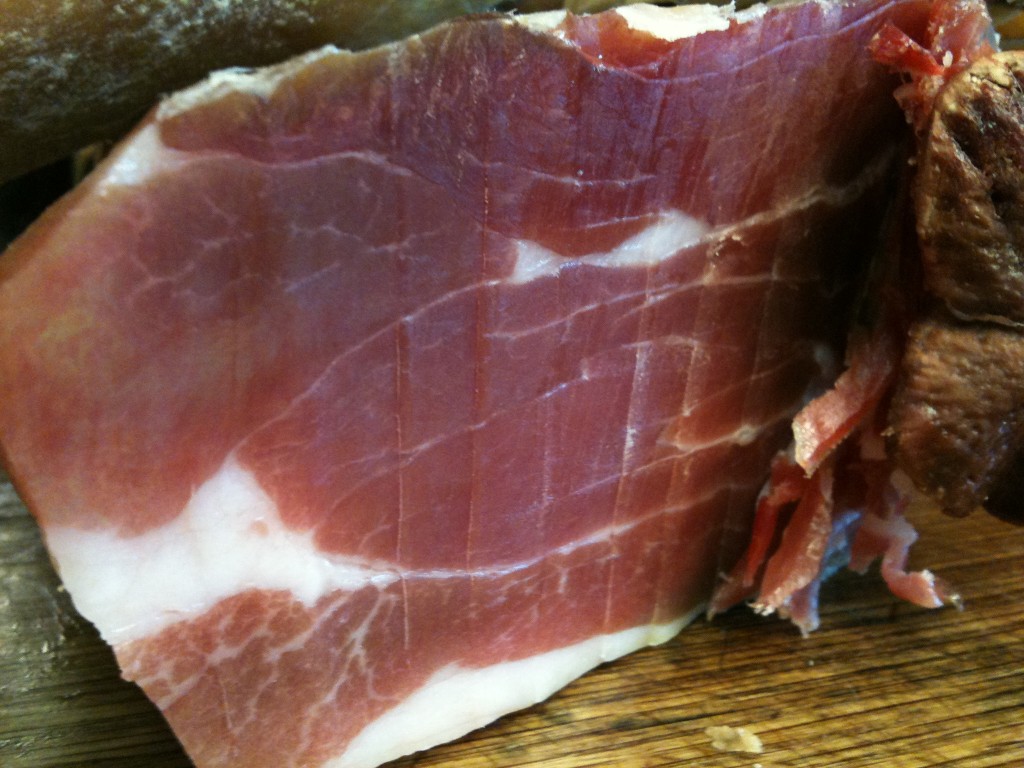Jamon Serrano (mountain ham) has deep rooted traditions that traverse Spain’s cultural history for hundreds of years. The quality, origin of the pigs and production of this salt cured jamon (ham) is a source of pride to Spanish producers. Unlike Italian prosciutto, jamon serrano is processed whole and with the pig’s hoof hence, ham on the hoof.
Years back it was customary for every family to butcher a pig in the fall and preserve the meat by salting and making an assortment of cured sausages aged over winter. The cool mountain climate provided ideal conditions to properly cure and age the jamon. Noting that curing jamon used to be a common family occurrence and since I truely enjoy this jamon, I decided to try my hand at making it, my version is called Sonoma Serrano Jamon.
As with any good jamon quality of the pig is important, here are the sides that I’ll be using for the Sonoma Serrano Jamon legs.  The legs do require a special cut to achieve the traditional look of a jamon leg.
Â
Â
Â
Â
Â
Â
Â
Â
During the salting period water is extracted and the salt penetrates deeper into the jamon. After two weeks, the salt is rinsed and the legs are hung to rest for 3 months at about 41 degrees and 70-80% humidity. The legs are then transferred to a room that is 45-48 degree farenheit with a humidity of 40-50%. This slightly warmer less dry environment causes the legs to sweat and extract more water from deeper in the leg. Finally the legs are matured and aged at 55 degrees for 18-24 months.Â
The leg that you see here has been aged for 48 months and was absolutely delicious, we’re still working on it. This leg began the curing process in April 2007 and was cut August of 2011. Normally legs are not stored this long but, when you start with 36 jamones, there’s only so much of the good jamon that you can enjoy. Dennis, holding the leg surely enjoyed the jamon. Â
When the jamon is ready to served, it’s cleaned of all the yellow rancid fat. Cutting down to the creamy white fat is desirable until you reach the burgundy colored jamon. The jamon is cut by hand into little bite size slices, the cut is somewhat rustic.
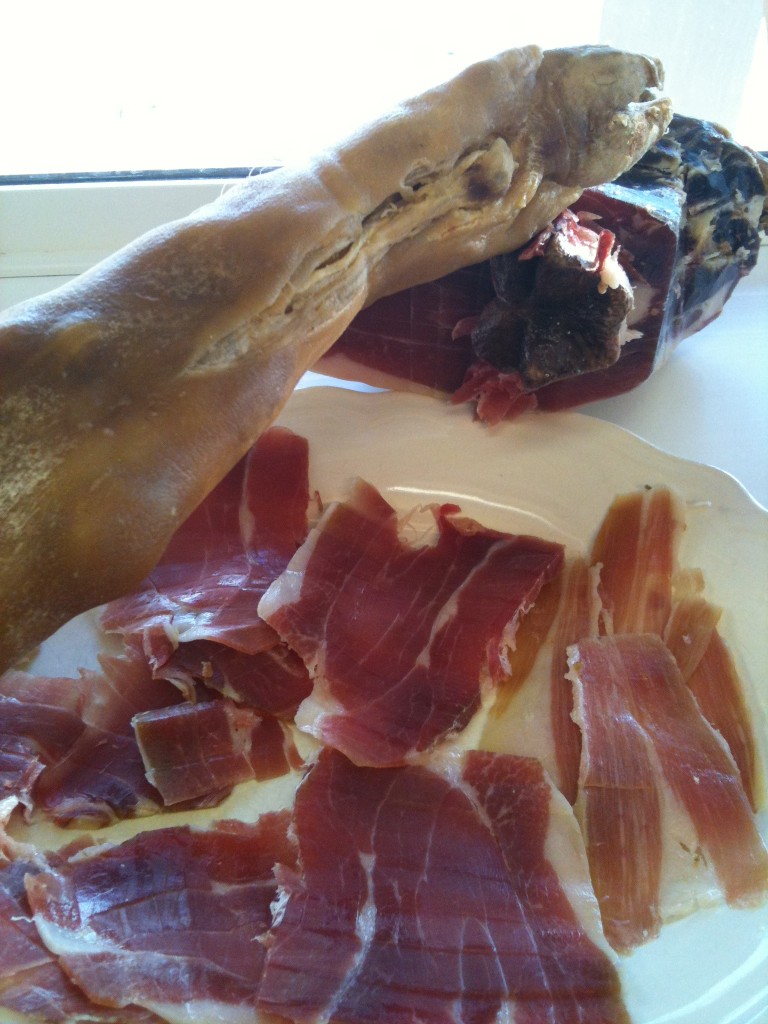 Four years in the making and worth the wait!
Four years in the making and worth the wait!
A word of caution, this post is not a recipe or intended as a  procedure to make your own jamon. There are many steps that I didn’t talk about regarding sanitation, temperature control, humidity and air circulation. The whole process can be very detailed and some spoilage is expected. Out of 36 jamones, I lost two to bad mold and a spike in temperature during the curing process. The process was not difficult once basic safety procedures where put in place. Now I’m looking forward to the next batch in 24 months. Salud amigos!

